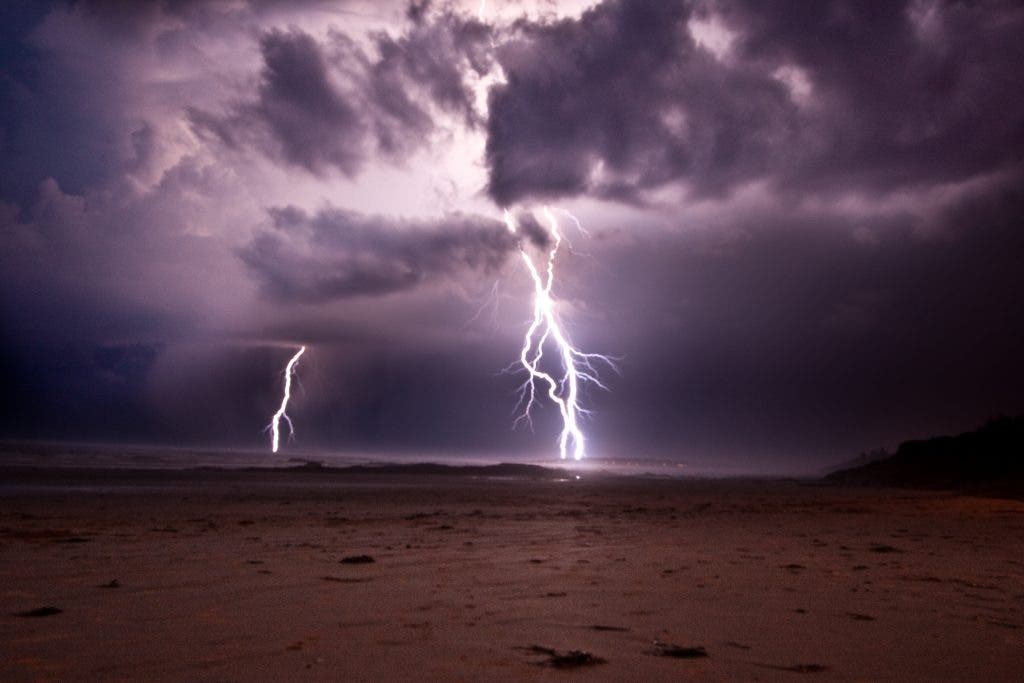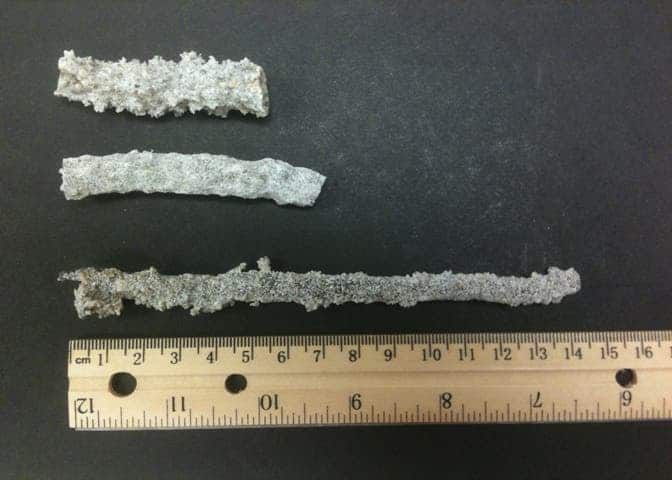Researchers in Florida have developed a new method of calculating a cloud-to-earth lighting strike’s energy by using geological methods. University of South Florida School of Geosciences Associate Professor Matthew Pasek and his colleague Marc Hurst of Independent Geological Sciences study fulgurites to measure how much energy was discharged into the soil — even strikes thousands of years old.

Lightning strikes are one of nature’s more conspicuous show of force. They light up the sky, cause huge booms and scare dogs the world over under tables. Such power undoubtedly requires a huge expenditure of energy, but according to Pasek, measuring exactly how much is really difficult. Atmospheric physicists can estimate it, based on electrical current and temperature measurements of the bolts as they occur, but the figures are approximations at best.
In order to find an exact figure, Pasek and Hurst have turned to geology to measure the discharge “after-the-fact,” rather than measuring energy during a strike. By using this method, they can even measure the energy in a bolt of lightning that struck Florida sand thousands of years ago.
Pasek explains that because bolts of lightning carry extremely high voltage, they can heat the air around the bolt to more 30,000 degrees Kelvin (over 53,000 degrees Fahrenheit) — this causes a rapid expansion which you hear as thunder. When lightning hits the ground, electrical current flows through it and heats the material to above its vaporizing level. Rapid cooling produces the fulgurite.
“When lightning strikes the sand, it may generate a cylindrical tube of glass called a fulgurite, said Pasek.
“The structure of the fulgurite, created by the energy and heat in a lightning strike, can tell us a lot about the nature of the strike, particularly about the amount of energy in a single bolt of lightning.”
The duo collected more than 250 fulgurites of various ages from sand mines in Polk County, Florida, a site that’s believed to have been hit by lightning for thousands of years. The area’s rich history is important because it allows the team to measure lightning strike history over a wide region near Tampa and Orlando, known today as the I-4 Corridor. They analyzed the properties of the fulgurites, paying particular attention to the length and circumference of the glass cylinders because the amount energy released is revealed by these dimensions.

Image credits Dr. Matthew Pasek/University of South Florida.
“Everyone knows there is a lot of energy in a lightning bolt, but how much?” Pasek said.
“Ours is the first attempt at determining lightning energy distribution from fulgurites and is also the first data set to measure lightning’s energy delivery and its potential damage to a solid earth surface.”
According to Pasek, the energy released by lightning is measured in megajoules, also expressed as MJ/m.
“For example a single megajoule is equivalent to about 200 food calories, or the energy from leaving a microwave on for 20 minutes to cook food,” he explains.
“It can also be compared to a 60 watt lightbulb’s energy use if left on for about four hours. It’s also the same as the kinetic energy a car has traveling about 60 mph.”
The team found that lightning strike energy peaks at values greater than 20MJ/m — equivalent to 20 cars all crashing into a surface the diameter of your pinky at the same time. The researchers also found a way to separate the “normal” lightning strikes from the “abnormal.”

Image credits permutate / Deviantart.
“While we presented a new method for measuring by using fossilized lightning rocks, we also found – for the first time – that lightning strikes follow something called a ‘lognormal trend,” explained Pasek.
“A lognormal trend shows that the most powerful lightning strike happen more often than would be expected if you made a bell curve of strikes. This means that the big lightning strikes are really big.”
According to Pasek, who is also an expert in astrobiology, geochemistry and cosmochemistry, lightning strikes the Earth about 45 times per second, with 75 to 90 percent of the strikes over land masses.
“About a quarter of these strikes occur from a cloud to the ground, so the fulgurite-forming potential is great, with up to 10 fulgurites formed per second globally,” said Pasek.
Well then, maybe my dog has legitimate cause for concern.
The full paper, “A Fossilized Energy Distribution of Lightning,” has been published in the journal Scientific Reports.


